Sony X90L is a higher-end model from the Japanese manufacturer, which premiered in 2023 but will continue successfully in 2024 as well. The Sony brand and the name Bravia are associated with excellent picture quality, and this model confirms that reputation – it offers great brightness and very good black levels. Despite having fewer local dimming zones than its competitors, it makes up for it with an advanced algorithm. Additionally, after calibration, the television presents very well-rendered colors, resulting in a natural and cohesive image reminiscent of IMAX theaters. In everyday use, X90L performs excellently, mainly thanks to the image processor that effectively scales lower resolution content and the recording function from the built-in tuner, which is becoming increasingly rare in today’s televisions. Sony is also closely tied to the world of PlayStation, and in this regard, X90L Sony does not disappoint. It is equipped with HDMI 2.1, VRR, ALLM, and a convenient Game Bar, making it a good choice for gamers who expect smooth gameplay and quick response. However, even in such a successful model, there are some drawbacks. Gamers may be disappointed by the lack of support for HGiG, which could improve image quality in HDR games. Additionally, Sony has not yet released an update that would reduce input lag in Dolby Vision mode – something that has been achieved in the higher model, the A95L. Those who prefer slimmer devices should know that although Sony X90L looks elegant due to its aluminum frame, it is not among the thinnest televisions on the market. Even though X90L has already been on the market for a year, it remains a solid device that combines good picture parameters with functionality and support for gamers. It is a successful choice for those looking for a versatile high-end television.
- Matching (Score)
- Our verdict
- TV appearance
- Where to buy
- Contrast and black detail
- HDR effect quality
- Factory color reproduction
- Color reproduction after calibration
- Smoothness of tonal transitions
- Image scaling and smoothness of tonal transitions
- Blur and motion smoothness
- Console compatibility and gaming features
- Input lag
- Compatibility with PC
- Viewing angles
- TV efficiency during daytime
- Details about the matrix
- TV features
- Apps
- Playing files from USB
- Sound
Sony X90L vs LG OLED B5
Direct compare
Check the best price offer:
LG OLED B5X90L

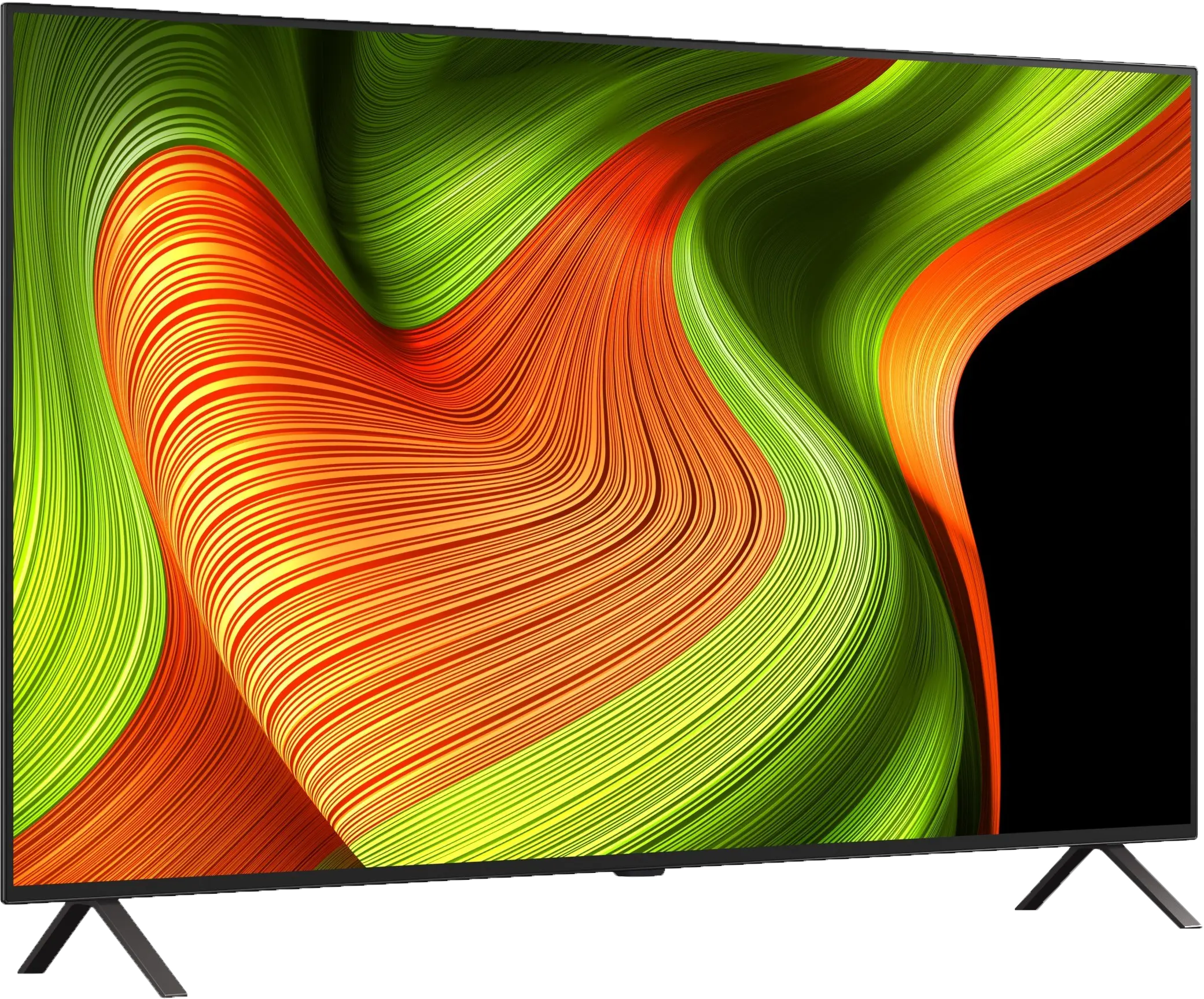
Panel type: LCD VA
Resolution: 3840x2160
System: Google TV
Model year: 2023
Complete the survey to find out the result

Panel type: WRGB OLED
Resolution: 3840x2160
System: WebOS
Model year: 2025
Complete the survey to find out the result

Overall rating
7.7
7.8
Movies and series in UHD quality
7.5
7.9
Classic TV, YouTube
7.5
8.6
Sports broadcasts (TV and apps)
7.4
8.5
Gaming on console
7.9
9.2
TV as a computer monitor
7.4
7.6
Watching in bright light
7.8
4.9
Utility functions
8.6
8.3
Apps
9.6
8.7
Sound quality
7.0
7.0
Complete the survey to find out what fits your preferences
Advantages
120 Hz panel - great for gamers and sports fans
Good black and contrast reproduction thanks to advanced local dimming algorithm
Supports HDMI 2.1, VRR, ALLM, and Game Bar - ideal gaming features
High SDR brightness (785 cd/m²) - performs excellently in well-lit rooms
Google TV operating system - intuitive, rich in applications and customization
TV program recording feature without the need for an external decoder
Natural image scaling - the image without excessive sharpness looks realistic
Perfect black and contrast
Pleasant picture in HDR format
Outstanding color reproduction capabilities
120Hz OLED panel - excellent motion fluidity
4 HDMI 2.1 ports and full support for gamers (VRR, ALLM, Dolby Vision Gaming, HGiG)
Very low input lag
Correct content scaling and good digital processing
User-friendly webOS system with Magic remote
Built-in USB recording function from built-in DVB-T/T2 tuners
Disadvantages
No support for HGiG
Cannot enable VRR and Dolby Vision simultaneously
Only 2 HDMI 2.1 ports, including 1 e-ARC
The TV is not the slimmest – this may be a drawback for those who prefer ultra-thin models
Average brightness and poor performance in bright rooms
No support for DTS formats
Different versions of the remote in derivative models – it's hard to predict which version we will get
Our verdict
LG B5 is truly a great OLED television that shows you don't need to spend a fortune for very good quality. It offers deep blacks typical of organic panels, excellent color reproduction—especially after calibration—and enjoyable HDR movie watching experiences. All of this makes evening viewings capable of delivering cinematic emotions without reaching for significantly more expensive screens. The fluidity of the picture and the set of features for gamers also deserve recognition. A 120 Hz panel, low input lag, full support for HDMI 2.1, variable refresh rates, and Dolby Vision Gaming mode make the B5 a very versatile screen—for both gaming and watching sports. It is complemented by a user-friendly webOS system with a Magic remote that provides convenient access to content and simplifies operation. However, not everything is perfect. Compared to the B4 model, there is a noticeable slight drop in brightness, especially in very bright rooms. For some users, the lack of DTS audio support may also pose a problem, which could necessitate workarounds when connecting Blu-ray players. Despite this, LG B5 remains one of the most sensible choices for those looking to enter the world of true cinema—without overpaying but also without significant compromises. It’s a screen that doesn't need to prove anything—it simply delights the eye with great picture quality and works as it should.
TV appearance





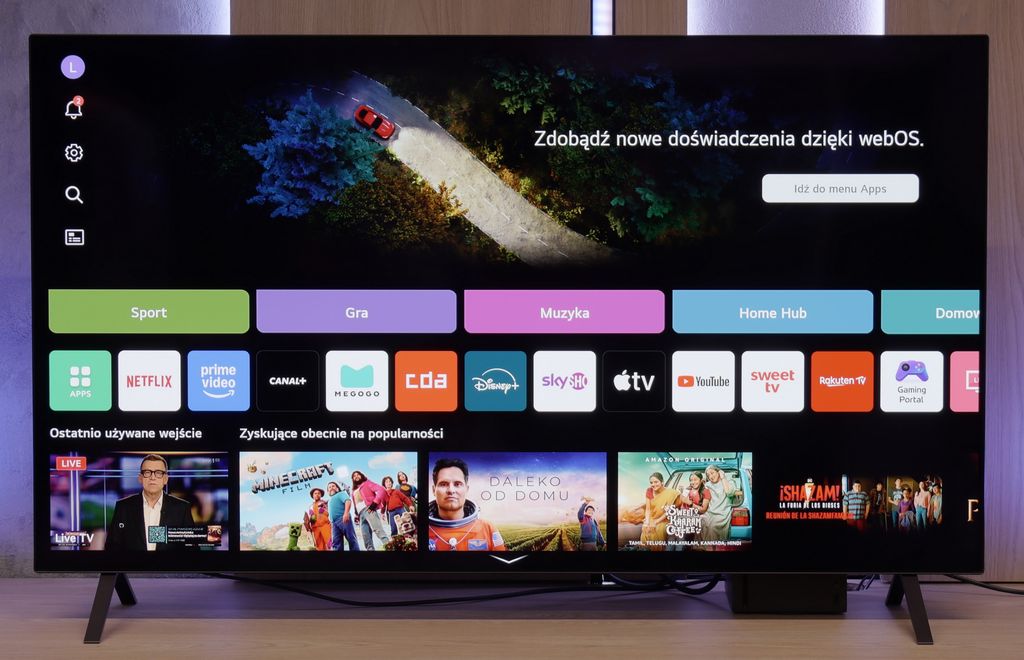
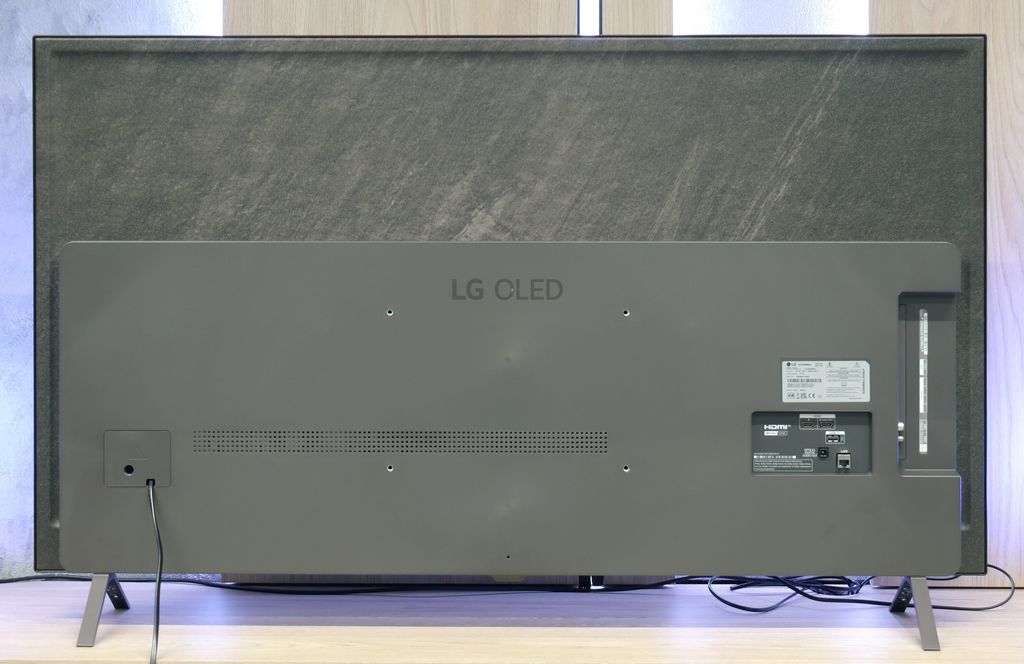

Contrast and black detail
7.6/10
10/10
Local dimming function: Yes, number of zones: 88 (11 x 8)
Contrast:

Result
87,500:1

Result
14,400:1

Result
99,250:1

Result
9,550:1

Result
6,300:1

Result
∞:1

Result
∞:1

Result
∞:1

Result
∞:1

Result
∞:1
Halo effect and black detail visibility:


The Sony X90L television is equipped with a VA panel and in the tested size of 65' has 88 dimming zones. It may seem that such a number of zones does not make a great impression, but thanks to the local dimming algorithm, the television handles blacks very well. This is clearly visible in the first and third test slides, where the contrast reaches nearly 100,000:1. In more demanding scenes, the X90L does not achieve such spectacular results anymore – a contrast level of 6000:1 is simply acceptable. The light separation is really good, confirmed by the scene from the movie "Oblivion". However, the small number of dimming zones causes the halo effect to be visible, especially in the test film from "Sicario 2," where the helicopter lights cause quite a noticeable flare on a large area of the screen. Despite the small number of dimming zones, the Sony X90L does a really good job of reproducing blacks. Although it does not compare to the highest series of miniLED or OLED televisions in terms of black depth and contrast level, it offers solid results that are sufficient for demanding users in most cases.
If you're looking for changes compared to last year's LG B4, we'll dispel any doubts right away - you won't find any in this category at all. And that's a good thing. Because how do you improve something that already borders on perfection? The LG B5, as is fitting for an organic WOLED screen, offers pitch-black scenes and contrast that's hard to find even in the most expensive LCD displays. The screen is as clear as a tear – no bleed-through, no smudges, no halo effects that can ruin the atmosphere in cinematic scenes. Everything is in its place here. Details separate from the black with surgical precision, nothing blends together, even in the most demanding sequences from movies like The Revenant or Oblivion. This is the type of TV that can enchant you especially when the room goes completely dark. When the lights go out, the LG B5 takes center stage – and it does so magnificently. In these conditions, OLED shines the brightest, and even top LCD models – despite advanced dimming and hundreds of zones – simply fall behind.
HDR effect quality
6.5/10
6.2/10
Luminance measurements in HDR:

Result
912 nit

Result
680 nit

Result
678 nit

Result
640 nit

Result
797 nit

Result
587 nit

Result
593 nit

Result
628 nit

Result
589 nit

Result
470 nit
Scene from the movie “Pan” (about 2800 nits)


Scene from the movie “Billy Lynn” (about 1100 nits)


Static HDR10


Dynamic: Dolby Vision
Dynamic: Dolby Vision


HDR luminance chart:
LG OLED B5
Luminancja HDR
Luminance of RGB colors
Sony X90L
Luminancja HDR
Luminance of RGB colors
HDR on the Sony X90L television looks promising. The luminance chart showed that the TV has a solid power reserve, reaching a maximum of 1000 nits in synthetic tests. But how does it perform in real scenarios? In scenes such as the first one from Life of Pi or the final sequence from The Meg, the TV can deliver this power on HDR content, achieving around 800 nits. Unfortunately, displaying small light elements on a black background, as in the scene from Sicario 2, poses greater challenges for the X90L – here the results reach about 600 nits. Despite this, when looking at competitive models with mini-LED technology, the effect looks very good and can shine enough to impress us. The color gamut coverage is also noteworthy, with a result of 96% for DCI-P3 and 76% for BT.2020, indicating good color reproduction in HDR content.
LG B5 is a moderately bright OLED TV. Regardless of the scene, it can generate around 500 nits of peak brightness. And interestingly, it does this even in full-screen shots flooded with white, where most OLEDs usually fall short. So, is this screen suitable for HDR movies? Yes – absolutely, because such brightness really allows you to feel the magic of HDR effects. However, it's worth noting that compared to last year's model B4, the new B5 is darker – by about 100 nits. It may seem like a small difference, but at such average peak values, it makes quite a significant difference. Fortunately, the TV makes up for it with another advantage – excellent coverage of the DCI-P3 and BT.2020 color gamut. As a result, HDR movies look really colorful, vibrant, and impressive even in more demanding scenes.
Factory color reproduction
6.2/10
8.2/10


Factory Mode
After calibration


Factory Mode
After calibration
The best mode in Sony televisions is the IMAX Enhanced mode. Although IMAX is mainly associated with the cinematic experience, here the color reproduction right out of the box is average. In the case of lower quality materials, such as HD – regular TV or YouTube – it is worth paying attention to the white balance. It is characterized by a deficit in red and an excessive dominance of blue, which gives the image a pinkish hue. The brightness characteristic, or gamma, for HD content is quite decent, but a slight boost may cause the image to become washed out and appear as if it is behind a light fog.
In 4K HDR content, the situation looks a bit different. The white balance shows a significant boost in blue, which makes the image appear unnaturally sharp and gives it an artificial feel. Such an exaggeration in color reproduction may not appeal to everyone, especially if one prefers more realistic shades. Additionally, the EOTF curve in Sony X90L looks quite decent at first glance. However, at the end of the graph, there are certain fluctuations that suggest the television is trying to maintain the appropriate brightness to avoid overexposing larger elements.
We tested the B5 in Filmmaker mode and... we would like to see more TVs like this straight out of the box. Really. The white balance is set very well – there is practically nothing to complain about. Well, if one were to be very picky, one might notice a slight deficiency in blue, which makes the overall picture have a slightly yellowish tint. But that’s just our editorial nitpicking. Most of you probably won't even notice it. We also have some minor reservations about brightness management in HDR format. The EOTF curve – that is, the one responsible for how the TV distributes brightness in a scene – is slightly below the ideal. In practice, it can happen that the darkest parts of the image may be displayed too dark and simply... disappear. But these are details that only come out in measurements. Overall: we are impressed. But we also know that LG TVs respond very well to professional calibration. They can produce nearly reference-quality images, so – even though it's already very good out of the box – we allowed ourselves to take an extra step and fine-tune everything to perfection.
Color reproduction after calibration
9.1/10
9.1/10

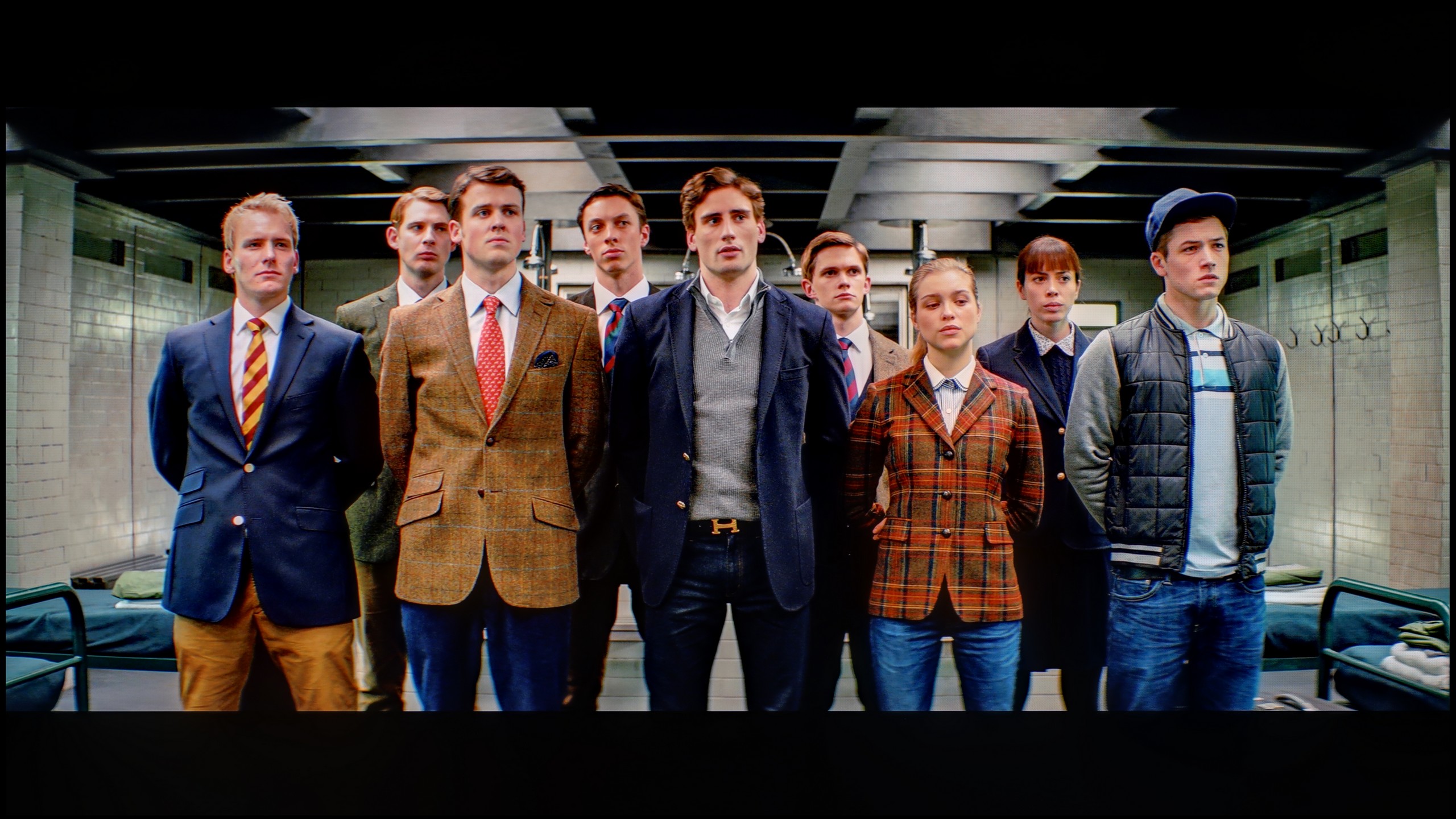

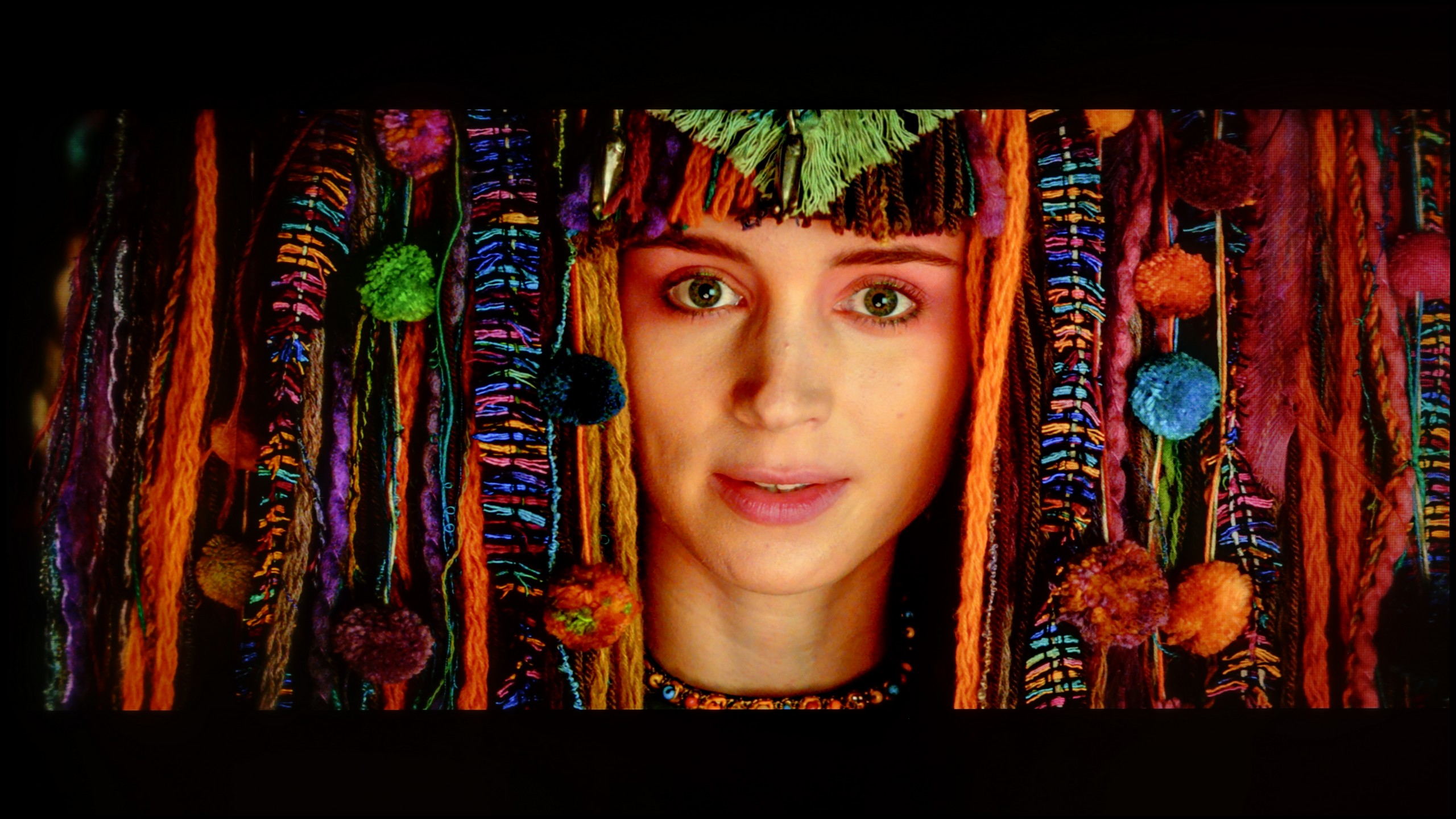
Sony offers many tools to improve image quality, including two additional image modes that we decided to use during testing and apply calibration to them. This solution significantly facilitates the calibration work and is very effective, provided that the right tools are available. In the case of HD content, the white balance has been almost perfectly aligned – only one shade of gray exceeds the error value of "1", which is an excellent result. The same can be said about the brightness characteristic (gamma), which looks nearly perfect, with microscopic deviations of around 0.01.
In the case of 4K HDR content, the situation is not as ideal. Although the white balance has been significantly improved, it has not been possible to completely eliminate the dominance of blue color. Nonetheless, errors in the Colour Checker test only occasionally exceed the value of "2", which means that image distortions are practically unnoticeable. As for the EOTF curve, it is worth activating the filter in the upper right corner "EOTF in Movies" – the graph looks correct, but the television encounters difficulties illuminating very small elements, which results from the limited number of backlight zones. Despite these minor flaws, it is thanks to the calibration carried out that the IMAX Enhanced mode in the Sony X90L makes watching movies resemble a true cinema experience.
We must admit that we didn't have much work with the LG B5. It's one of those TVs that looks good right from the start, but after calibration… it can really impress. The white balance was brought to almost perfect levels – to a degree of error invisible to the human eye, unless you are a professional colorist with a magnifying glass at the screen. We also managed to control the TV's slight tendency to dim the darkest details, especially in HDR scenes. After proper tuning, everything looks coherent: the black is still deep, but not information-hungry. The highlights retain a natural sparkle, and the colors align with the director's vision. It's really one of those models that show you don't have to spend a fortune to get almost reference-quality image. If you can decide on professional calibration – it's definitely worth it for the B5.
Smoothness of tonal transitions
9.2/10
7.2/10





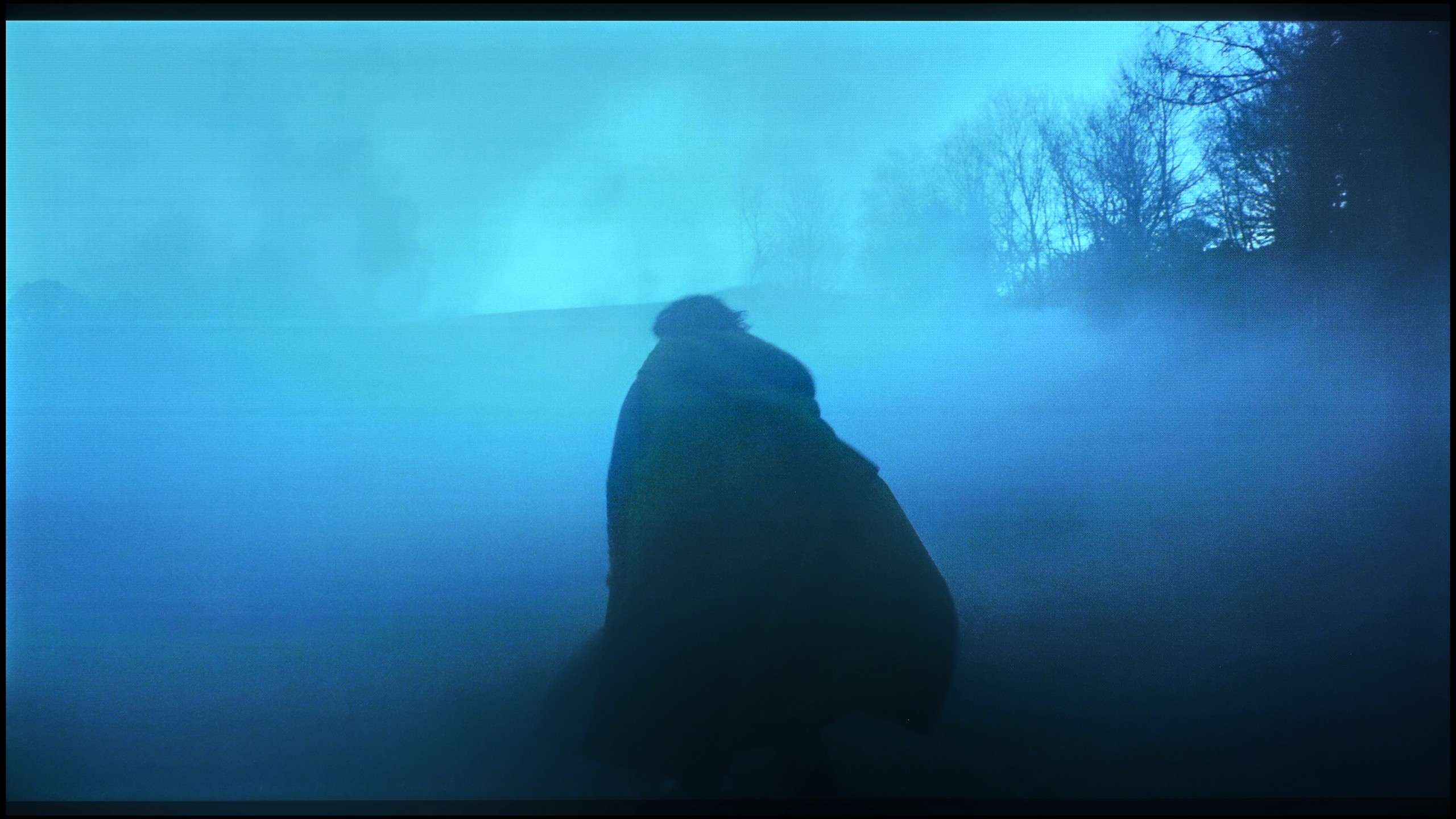

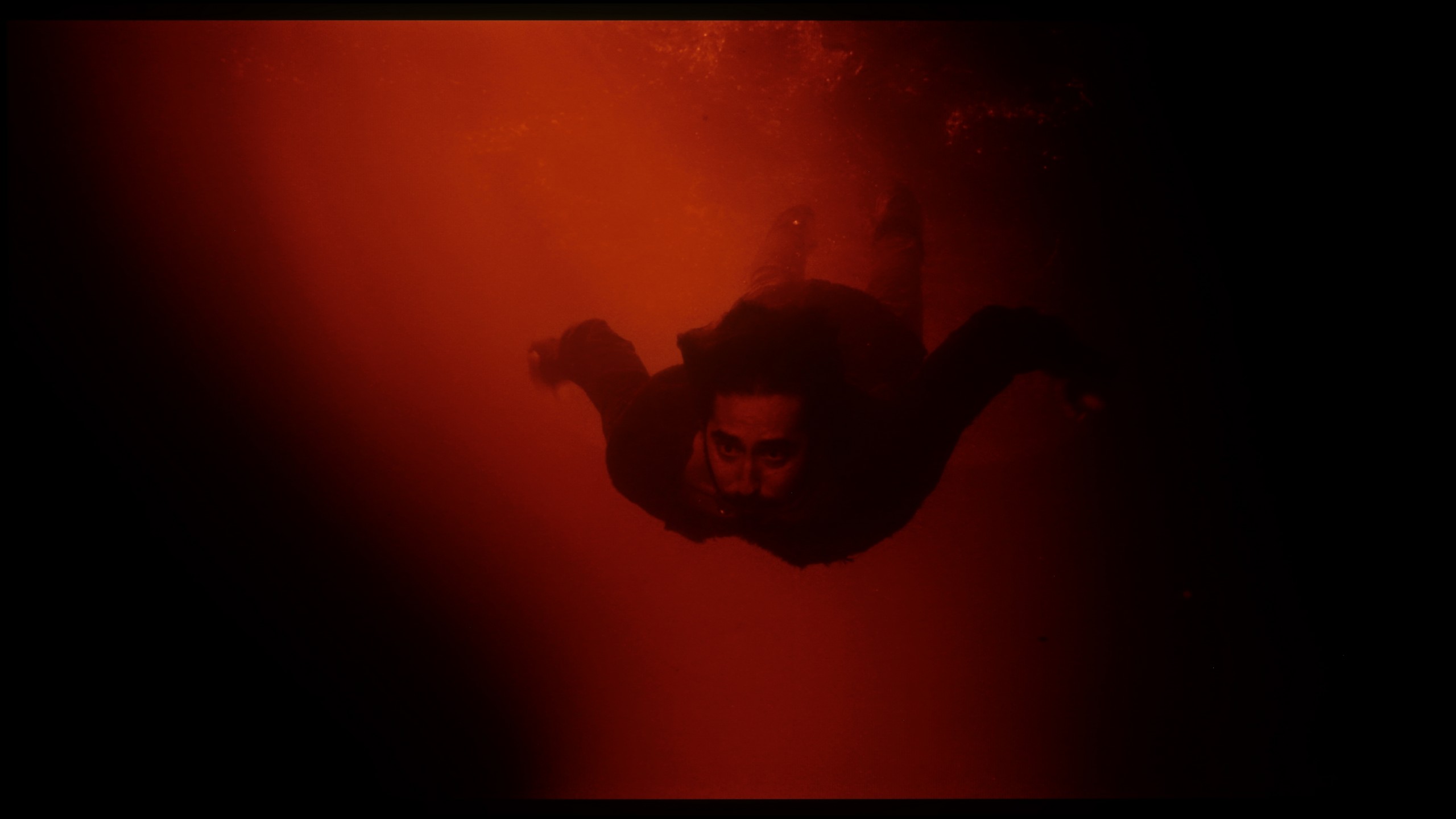




The smoothness of tonal transitions in Sony X90L is outstanding. The gradation is beautiful on high-quality sources such as 4K streaming. One can only notice slight banding on more demanding gradients, but the overall effect is very good and should satisfy even the more discerning viewers.
LG B5 handles color gradation quite decently. In bright scenes, where we have smooth transitions between skin tones, the sky, or backgrounds, the television merges colors seamlessly and without issues. At first glance – it's good, especially considering the price. But it's enough to reach for more challenging material – those darker, more demanding scenes with a lot of subtle transitions – and the problems begin. Minor artifacts, false contours, slight bumps appear. It's still not a level that stands out or distracts from the plot, but the difference compared to more expensive WOLED models – and even more so QD-OLED screens – becomes noticeable.
Image scaling and smoothness of tonal transitions
8.5/10
7.5/10
Smooth transition function

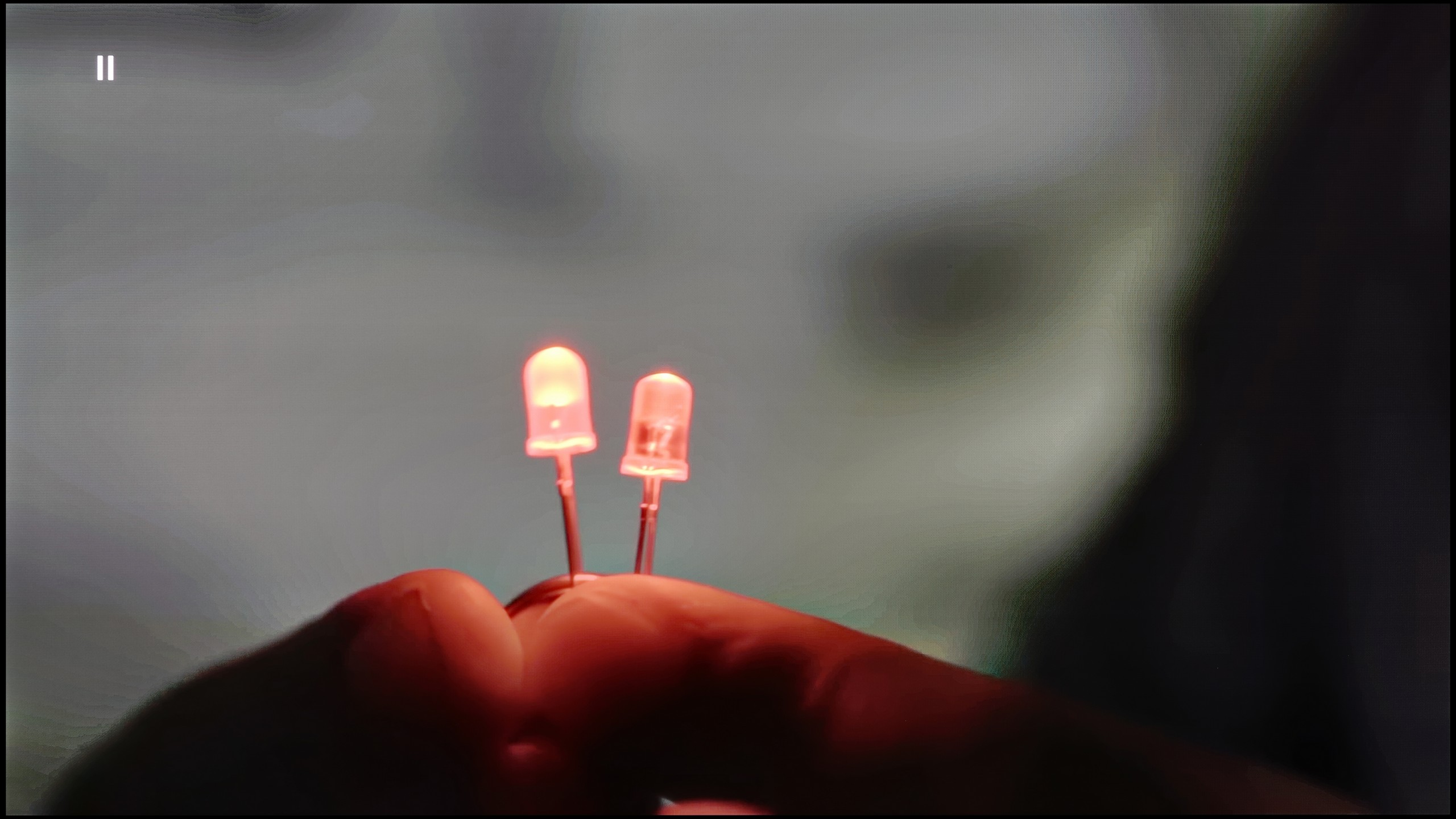
Image without overscan on the SD signal


The Sony X90L TV features a tone transition smoothing function known as Smooth Gradation, which is incredibly effective. Even at the "low" setting, the effects are satisfactory, but at the "medium" setting, it works like a dream – we recommend using this option for the best results. The image scaling on the Sony X90L is simply excellent. The image is not overly sharpened, which gives a natural effect and makes everything look cohesive. It is evident that the engineers really put effort into this aspect, creating a solution that impresses and works well in everyday use. Because of this, even when watching content like regular television or YouTube, where the image is not inherently stunning, one can enjoy a smooth, cohesive, and visually pleasing experience.
LG B5 really surprised us positively in terms of dealing with lower quality content. Thanks to the enhancement and smoothing features, HD or even SD materials get a new life. Importantly – when this option is turned on at the "low" or "medium" level, we don't get the impression that the image is artificially softened or overly smoothed. Details remain intact, film grain does not disappear, and object edges do not look washed out 😉. It's a really useful tool – especially if you watch terrestrial TV, archival materials, or content from YouTube in lower resolutions. The image is clean, cohesive, and simply pleasant to the eye.
Upscaling as such works very well – even content of poor quality is rendered with surprising fidelity. Unfortunately, there was a small hiccup. While the menu offers an option to turn off overscan, the television still struggles to display very low-resolution images correctly. It’s a minor detail, but when watching older materials – it can be annoying.
Blur and motion smoothness
8.1/10
8.5/10

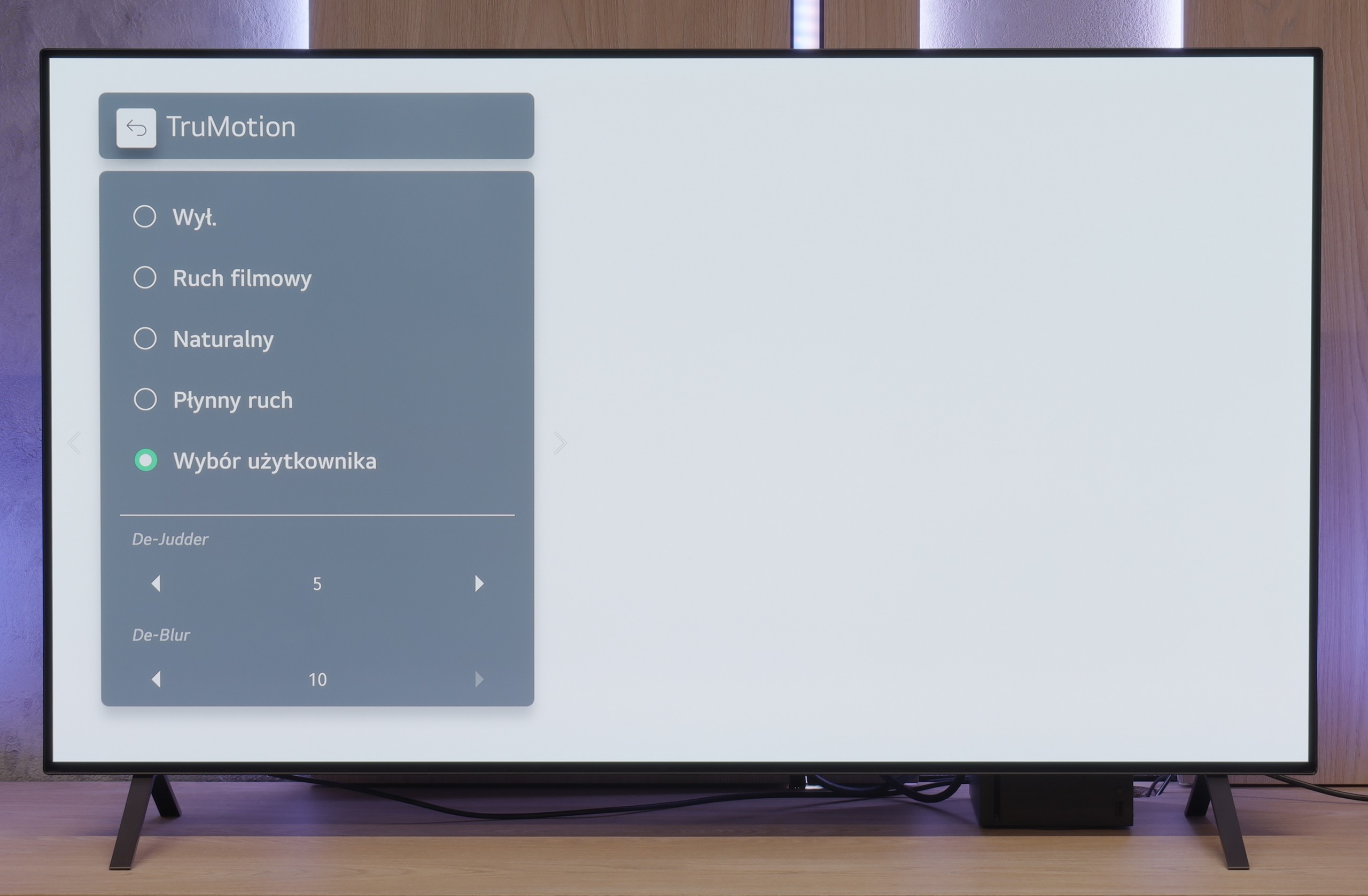
Blur (native resolution, maximum refresh rate):



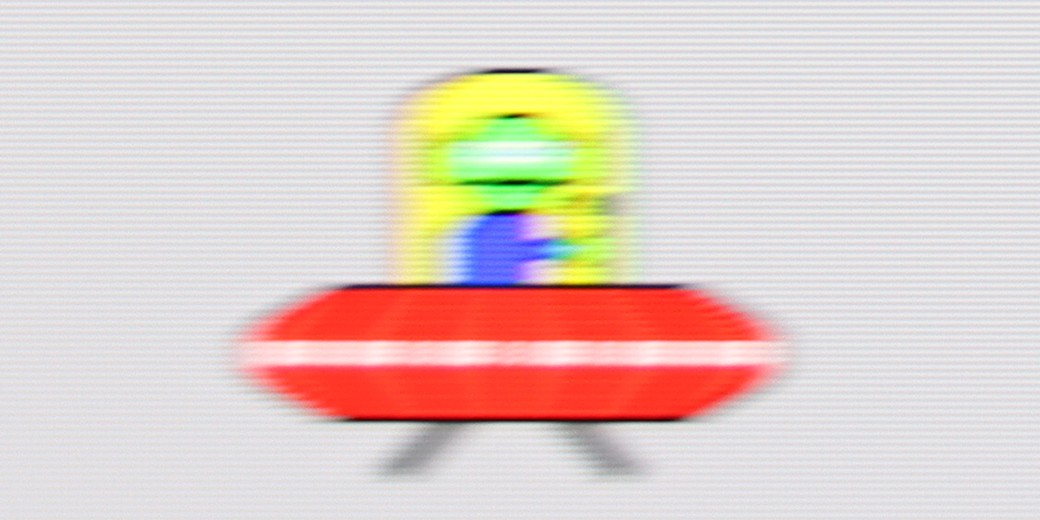
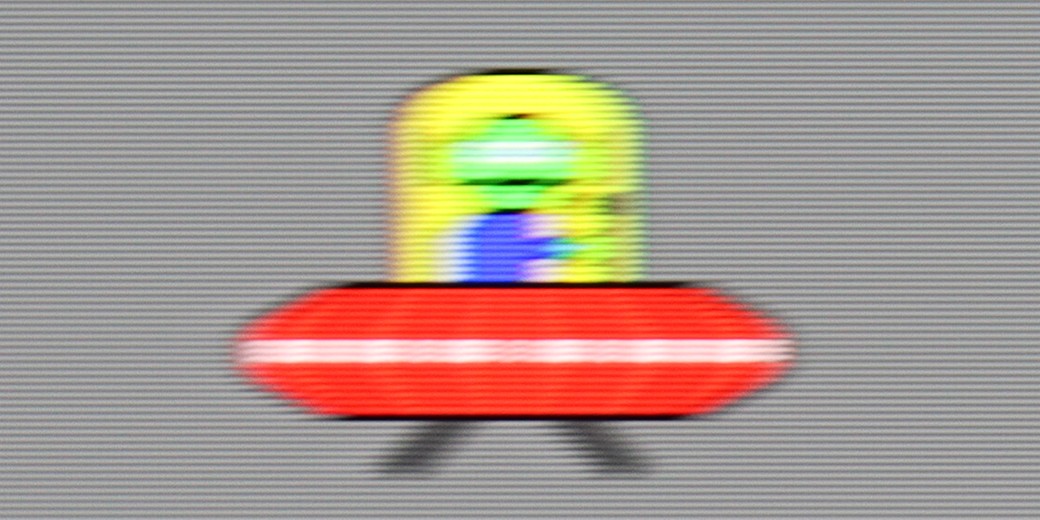
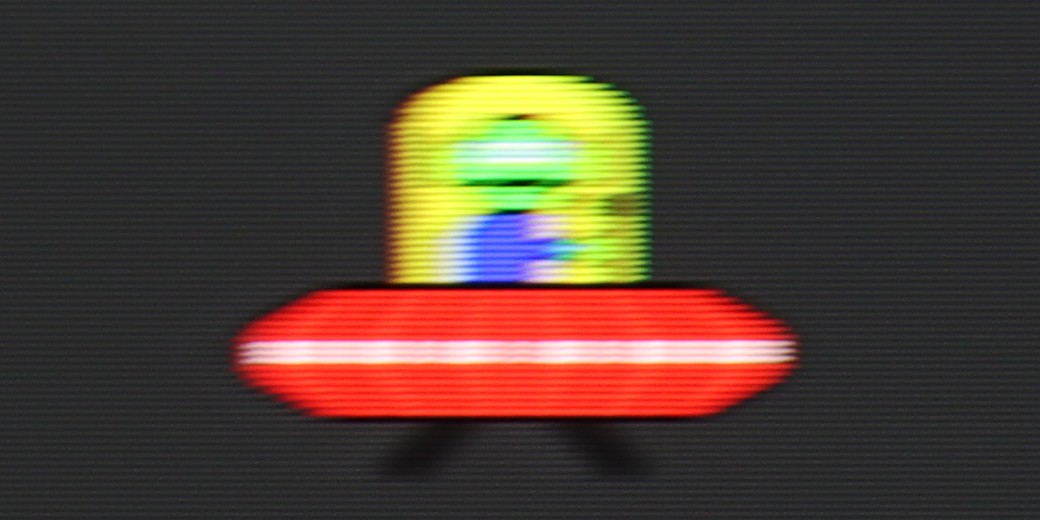
Blur (BFI function enabled):



Sony X90L with a 120 Hz panel is a great choice for both gamers and movie enthusiasts. The TV is equipped with the Motion Flow smoothness feature, which allows you to adjust motion smoothness using two sliders: "smoothness" and "clarity." The "smoothness" slider controls the level of motion fluidity, which helps reduce image stuttering, while "clarity" is used to reduce blurring and improve motion sharpness, which is especially useful in dynamic scenes.
The LG B5 is a television with a 120 Hz OLED panel. It may not sound as impressive as the marketing terms "144 Hz" or "165 Hz" found in gaming monitors, but honestly? The smoothness is still excellent. The picture is sharp, smooth, and simply enjoyable to watch – even when there’s a lot happening on the screen. The organic panel does its job – the pixel response time is nearly instantaneous, which means there’s no blurring or smearing that can ruin dynamic shots. Sports, fast-paced games – everything looks clear and distinct.
We also have LG's classic motion smoother, TruMotion. This feature allows you to smooth out films shot at 24 frames per second – in other words, most of what you watch on Netflix or on Blu-ray discs. If you set the “De-Judder” slider to lower values, you'll get an image closer to the cinematic experience – with a slight judder, but without artificiality. Higher settings? Soap opera effect guaranteed. Fortunately, LG gives you the choice, and you can tune everything as you like.
Console compatibility and gaming features
7.8/10
10/10
- ALLM
- VRR
- VRR range48 - 120Hz40 - 120Hz
- Dolby Vision Game Mode
Yes, high input lag
- Correct implementation of HGIG
- 1080p@120Hz
- 1440p@120Hz
- 4K@120Hz
- Game bar

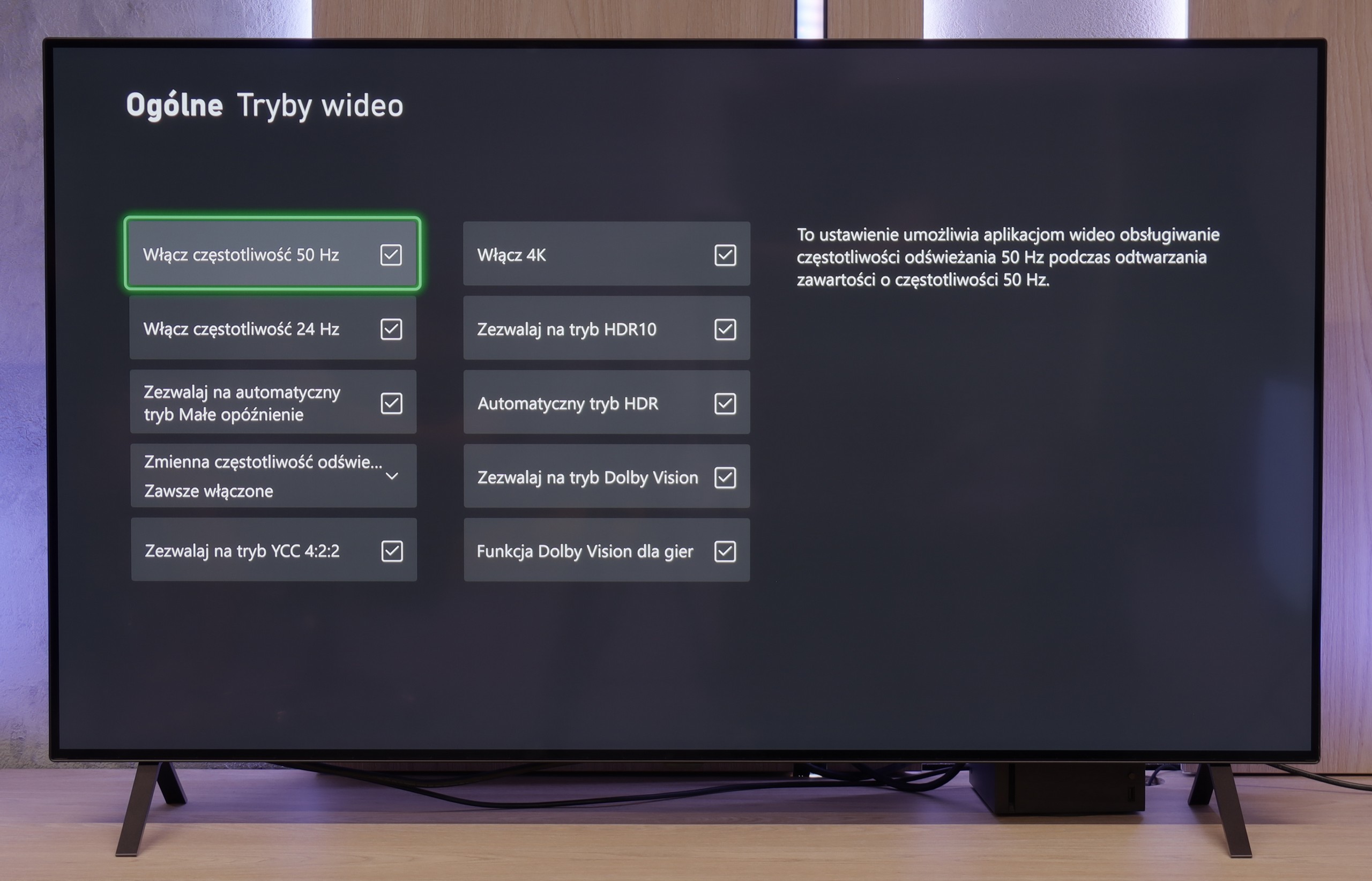

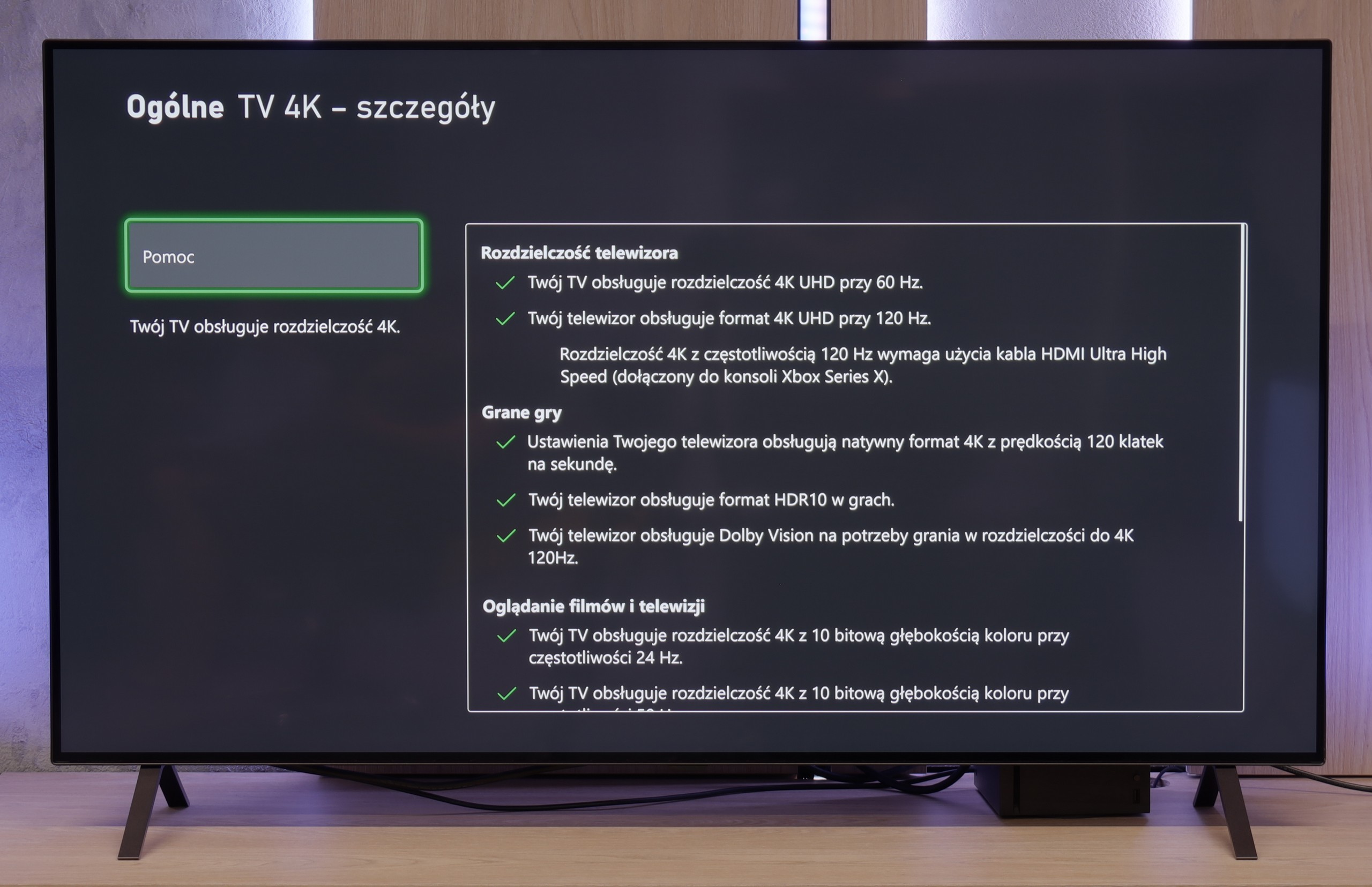

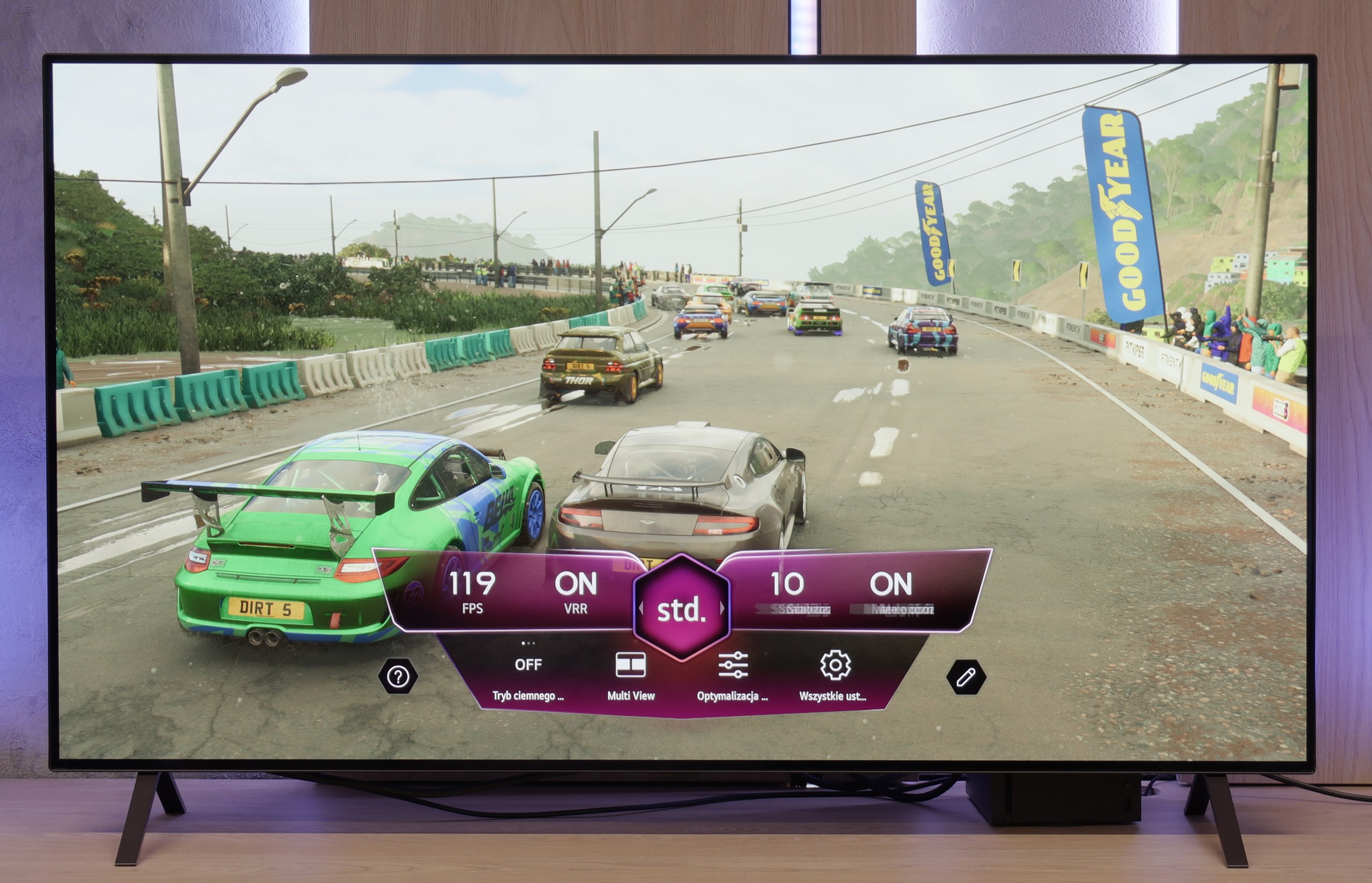

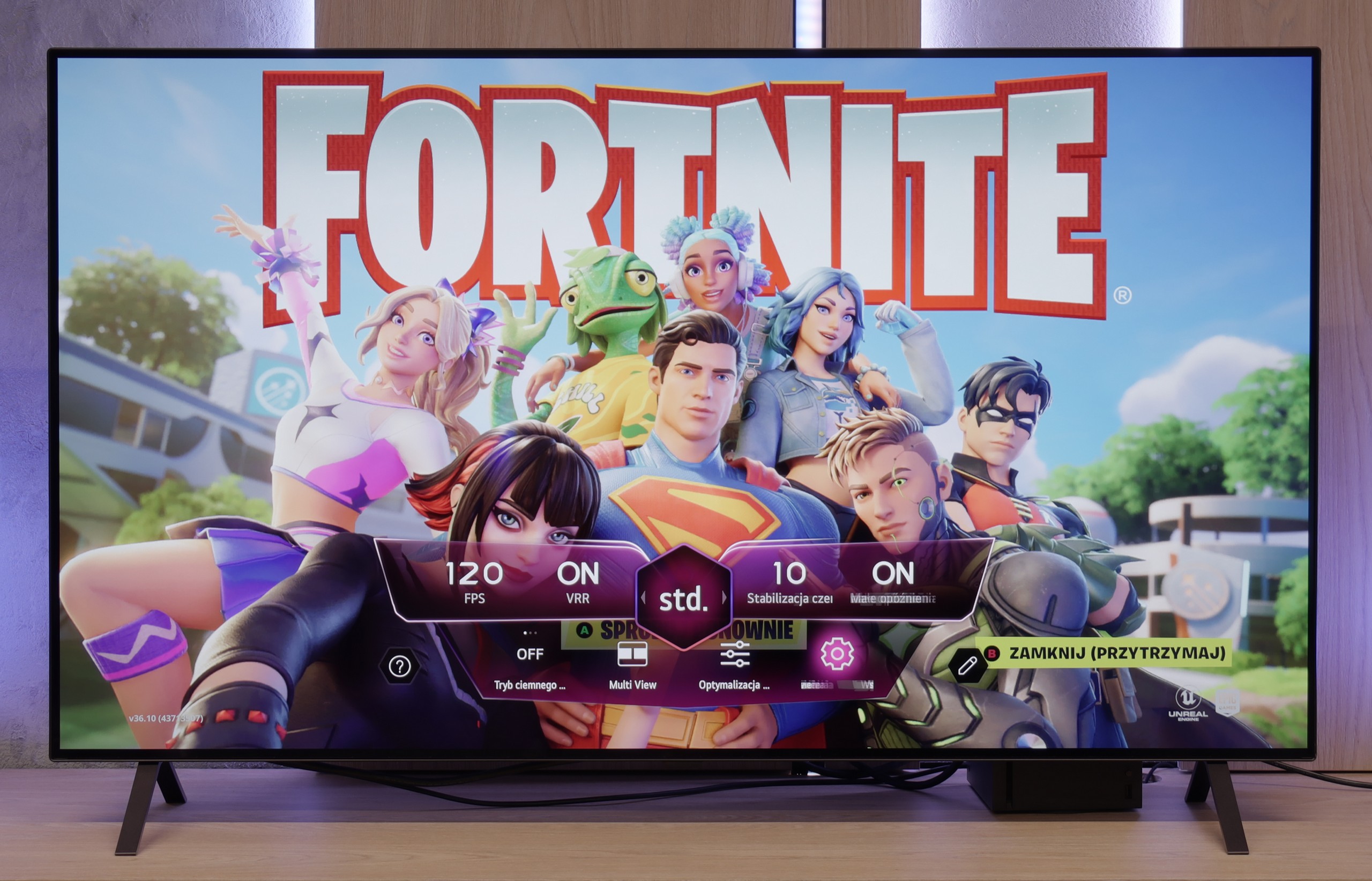
Sony X90L is a television that performs well in terms of compatibility with consoles and features for gamers. Its 120 Hz panel and two HDMI 2.1 ports with a bandwidth of 48 Gb/s allow for smooth play in high resolution and at a high frame rate. Gamers can also take advantage of the ALLM feature, which automatically switches the TV to low latency mode, and VRR, which provides smooth gameplay without screen tearing. Game Bar is an additional advantage – an intuitive tool that allows for quick access to the most important settings and gaming features, making it easier to control gameplay.
Unfortunately, in terms of HDR in games, the Sony X90L has its limitations. There is no support for HGiG, a standard that many gamers consider essential for precise HDR reproduction in games. Although the TV supports Dolby Vision, which theoretically could improve image quality in games, the practical application of this feature is problematic. Dolby Vision in game mode is associated with very high input lag, making gameplay less comfortable and precise movements more difficult. Additionally, it is not possible to enable Dolby Vision along with VRR. This means that despite numerous advantages, gamers seeking perfect HDR in games may feel a sense of disappointment.
There are already a few televisions on the market with the label "for gamers" that don’t really understand what that means. The LG B5 is not one of them. Everything here is right – there are four HDMI 2.1 ports, it has 120 Hz, VRR and ALLM, and it also has a Game Bar that is actually useful, not just looks good in the promotional folder. You connect your console – it works. You set 4K at 120 Hz – it works. You have an Xbox and want to play in Dolby Vision – it works too. And not in the sense of "it theoretically supports it," but rather it really turns on, looks good, and you don’t have to fiddle with the settings for half an hour. On top of that, there’s the HGiG picture mode, which LG has implemented correctly – meaning that HDR in games doesn’t turn the screen into a flashlight but shows exactly what it should. There are no surprises here, no strange limitations, no "buts." And you know what? That’s how it should be. Kudos to the LG B5!
Input lag
8.7/10
9.9/10
SDR
HDR
Dolby Vision
The input lag on the Sony X90L can be rated as decent, although it is not exceptional. In Dolby Vision mode, the television operates only at 60 Hz, and the high input lag complicates matters as it makes gameplay practically unplayable. For games at the popular 60 Hz frequency, the input lag is around 25 ms – this is an acceptable result, but for more demanding players, it may be disappointing.
However, those more advanced players who have equipment that supports higher refresh rates can expect better results. With a 120 Hz signal, the input lag drops to around 12 ms, providing significantly better responsiveness and smoother gameplay, meeting the expectations of more demanding users.
Here, we won't elaborate – the LG B5 simply has fantastic input lag. For 60 Hz content, it scores below 10 ms, and for 120 Hz, it even drops to around 5 ms. These are values that you can't honestly complain about. It just works instantly, without delays, without surprises. Well… almost. Because as usual, there's a small asterisk with the Dolby Vision Gaming mode. In this mode, the response time slightly increases. It's nothing dramatic – these are still very low values, rather imperceptible while gaming – but if you're playing exclusively tournament titles and fighting for every millisecond on the XBOX, it's worth keeping in mind.
Compatibility with PC
7.4/10
7.6/10

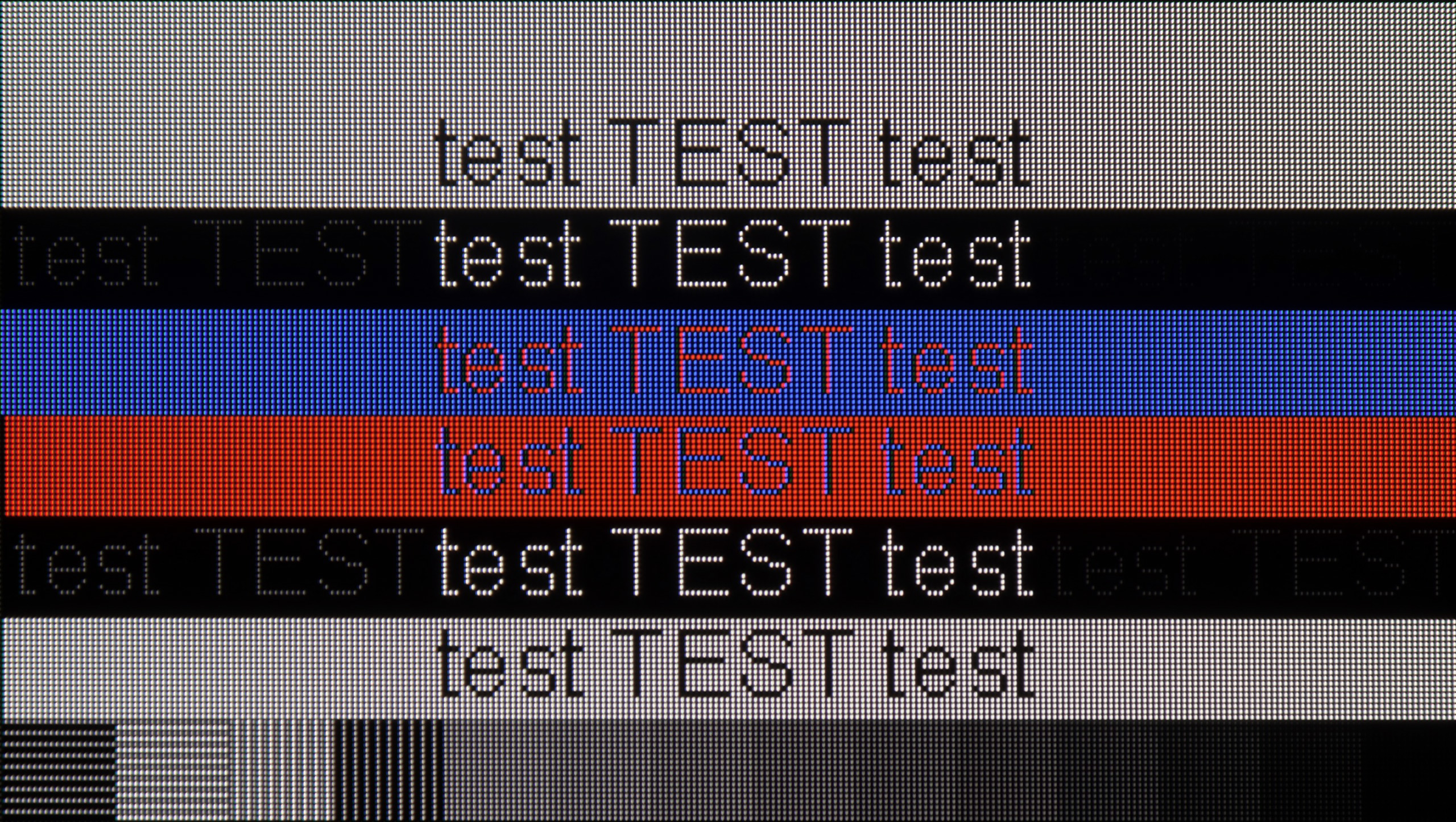
Cooperation with the PC in Sony X90L is at a good level. The X90L TV supports 4:4:4 chroma, which provides quite good font visibility, important when working or browsing content on a large screen. Although there are minimal issues with font readability on a dark background, it is not bothersome enough to be a significant problem in everyday use.
An additional advantage for PC users is the 120 Hz refresh rate and support for G-Sync functionality. As a result, gamers can expect smoother gameplay without stuttering or tearing effects, significantly enhancing comfort and gaming experience.
LG B5 is a TV that works great with a computer. You won't find gaming features like 144 or 165 Hz here, but is that really necessary for anyone? With a 120 Hz panel, low input lag, and G-Sync support, it’s truly a very good screen for gaming on PC. No stuttering, no tearing, with lightning-fast response.
But it’s not just for gaming. You can also quite comfortably... simply work on the B5. The TV correctly supports chroma 4:4:4, so fonts are readable, interfaces are clear, and your eyes won’t hurt from blurred letters. This is not obvious, even among more expensive models. However, there is one “but” – and this applies not only to the B5 but to every OLED with a WOLED panel. The RWGB subpixel layout can cause a slight shadow at the edges of fonts. This is not something that stands out from the couch. It’s more likely to be noticed by someone sitting with their nose to the screen and spending half the day in Excel.
Viewing angles
2.9/10
7.4/10
Viewing angles on the Sony X90L are unfortunately very poor, which is typical for VA panels. The picture loses quality when viewed from an angle, which can be problematic when watching from a greater distance or with a larger group of people. It's a pity that the manufacturer did not apply a coating to widen the viewing angles, which could significantly improve this aspect and make the TV more versatile for different room layouts.
In terms of viewing angles, the LG B5 performs very well – exactly as one would expect from a WOLED panel. No matter from which side you sit, the image retains its quality. The colors do not fade, the contrast does not drop significantly, and the details remain clearly visible. However, it must be honestly added that this is not the level of Samsung Display's QD-OLEDs. They manage to hold color saturation even better at extreme angles. But if you do not plan to watch movies sitting at a 90-degree angle – the B5 is more than sufficient. It’s one of those TVs that simply looks good from every side.
TV efficiency during daytime
7.8/10
4.9/10

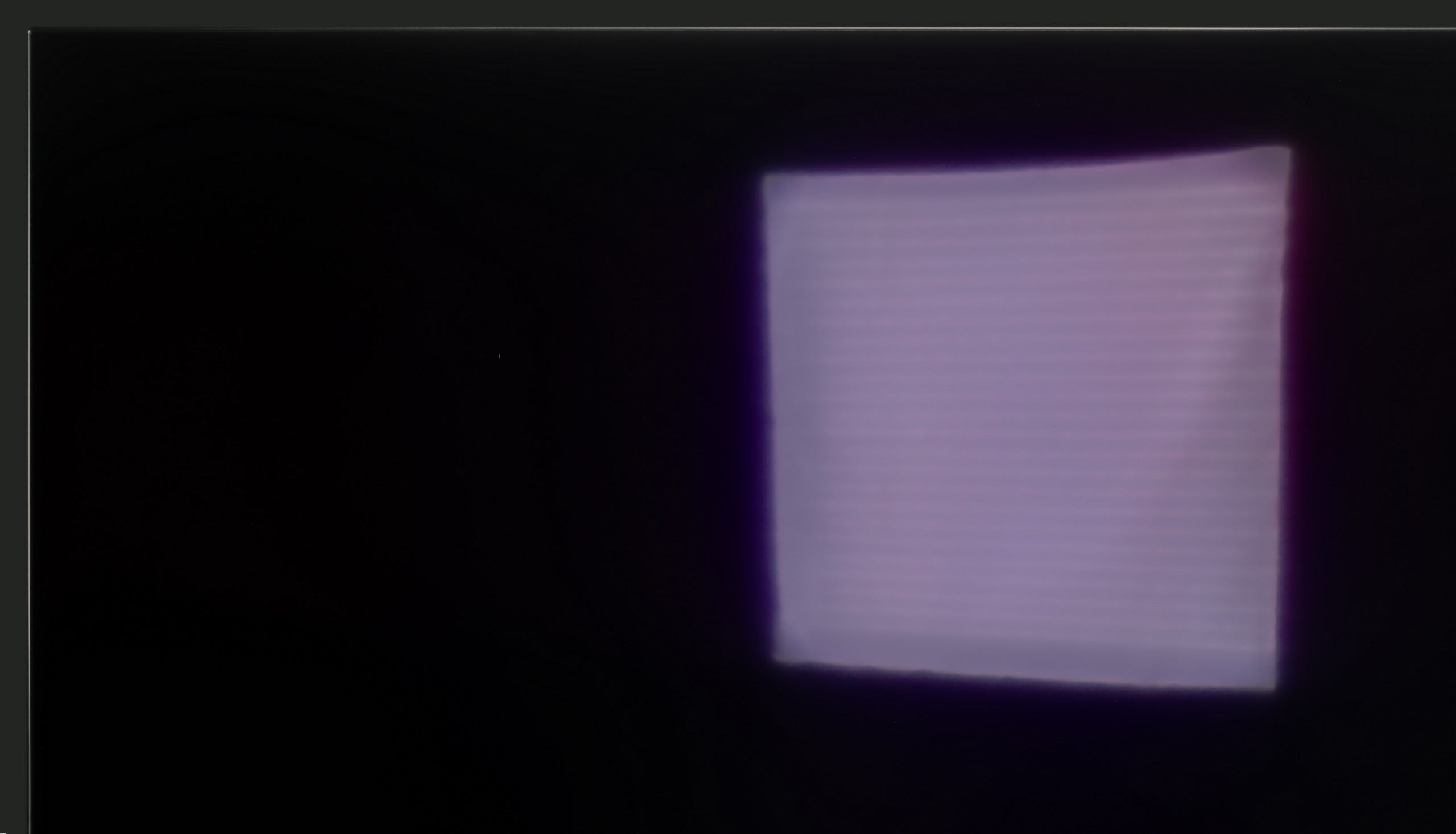

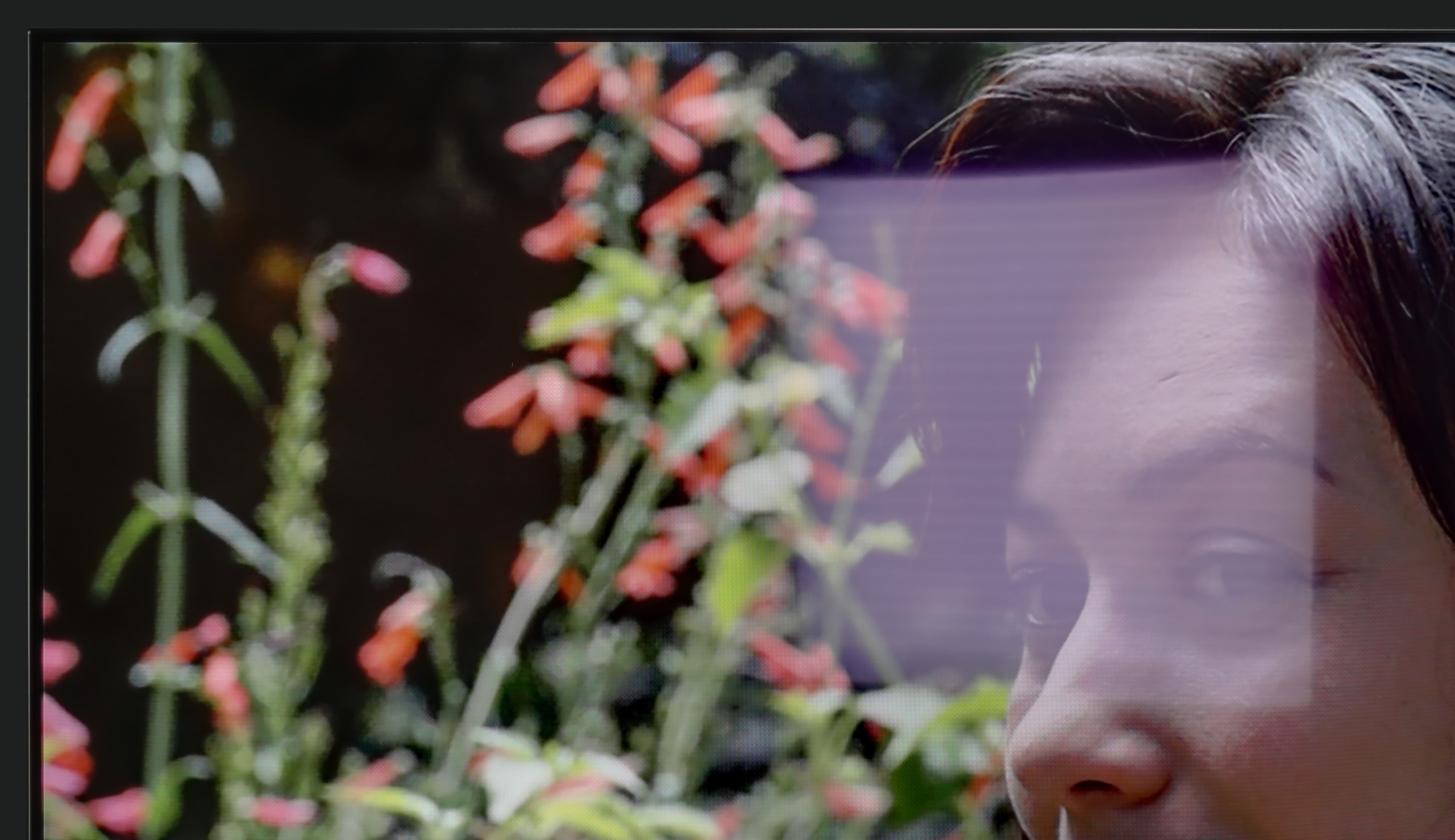
Matrix brightness
Average luminance SDR
LG OLED B5: 279 cd/m2
Sony X90L: 784 cd/m2
The performance of the Sony X90L television during the day is at a very good level. The matte screen effectively suppresses reflections, which minimizes glare and keeps the image clear even in bright rooms. The SDR brightness of 785 cd/m² allows for comfortable viewing of standard television and lower quality materials regardless of the time of day. As a result, the X90L performs excellently in both well-lit living rooms and more sunlit spaces.
LG B5 is a television that performs best after dark. But when sunlight comes in, it becomes a challenge. The brightness of this model is rather average, and the anti-glare layer... is also average. There are no special coatings that deal with reflections or very bright daylight. So if you plan to place this television opposite a large, uncovered window – it might just be hard to see anything.
Fortunately, there is something worth praising: the glossy WOLED panel maintains color saturation well. Even in difficult conditions, the image doesn’t fade or become "washed out," as can happen with some television models. Generally, it is watchable, but if you are looking for a television specifically "for a bright living room," then the B5 shouldn't be your first choice.
Details about the matrix
Subpixel Structure:

Panel uniformity:

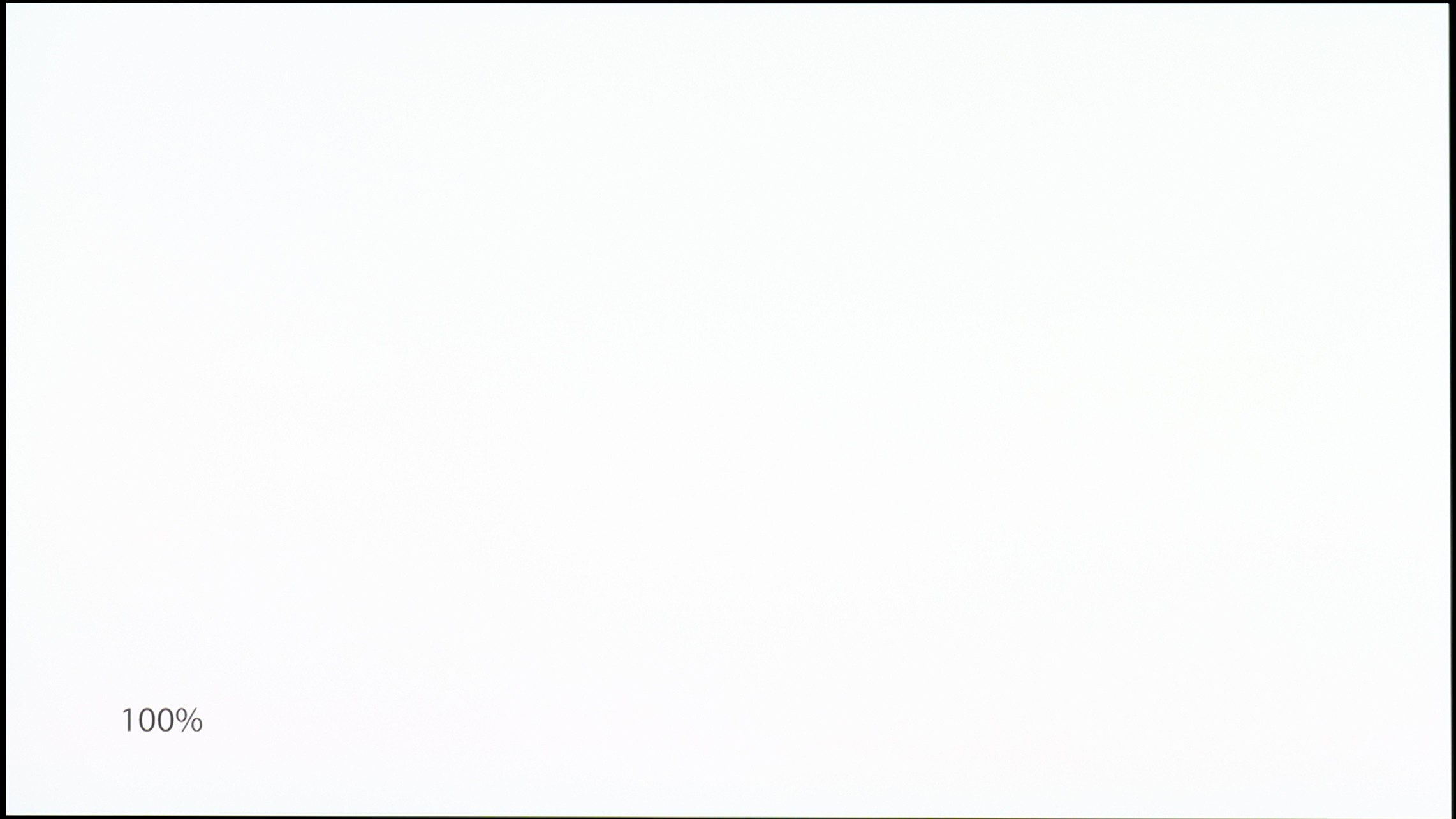
TV features
8.6/10
8.3/10
- HDMI inputs2 x HDMI 2.0, 2 x HDMI 2.1 48Gbps0 x HDMI 2.0, 4 x HDMI 2.1 48Gbps
- Other inputsRCA (Chinch)
- OutputsToslink (Optical audio), eARC (HDMI), ARC (HDMI)Toslink (Optical audio), eARC (HDMI), ARC (HDMI)
- Network InterfacesWi-Fi 2.4GHz, Wi-Fi 5GHz, Ethernet (LAN) 100MbpsWi-Fi 2.4GHz, Wi-Fi 5GHz, Ethernet (LAN) 100Mbps
- TV receptionDVB-T, DVB-T2, DVB-S, DVB-S2, DVB-CDVB-T, DVB-T2, DVB-S, DVB-S2, DVB-C
Classic features:
- Recording to USB (terrestrial TV)
- Recording programming
- Picture in Picture (PiP)
- RF remote control (no need to aim at the screen)
- Backlit remote control
- Teletext
- Audio only mode
- Possibility to connect Bluetooth headphones to the TV
- Possibility to simultaneously use Bluetooth headphones and the TV speaker
Smart features:
- AirPlay
- Screen mirroring (Windows Miracast)
- Wyszukiwanie głosowe
- Voice search in native language
- Ability to connect a keyboard and mouse


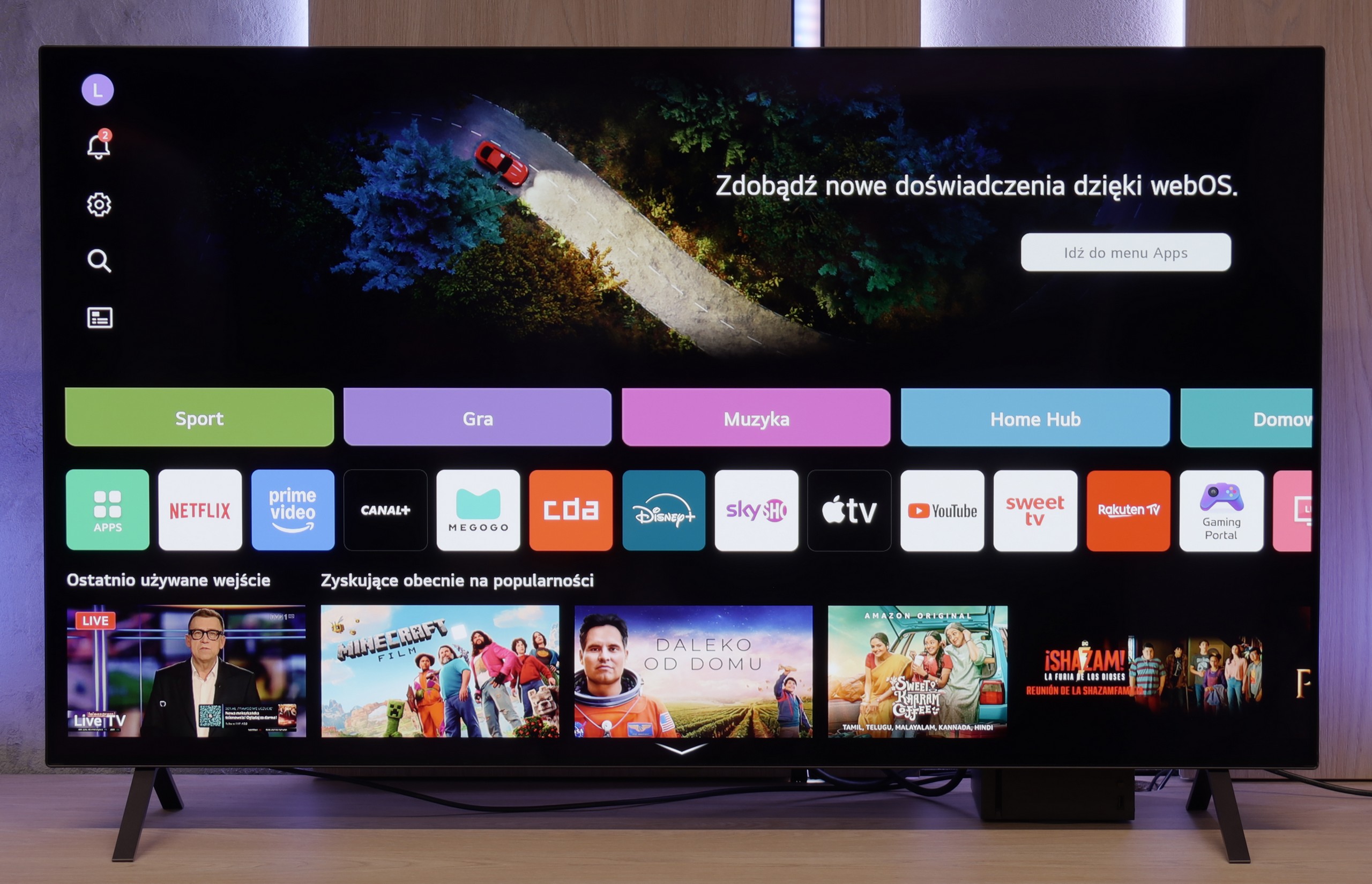
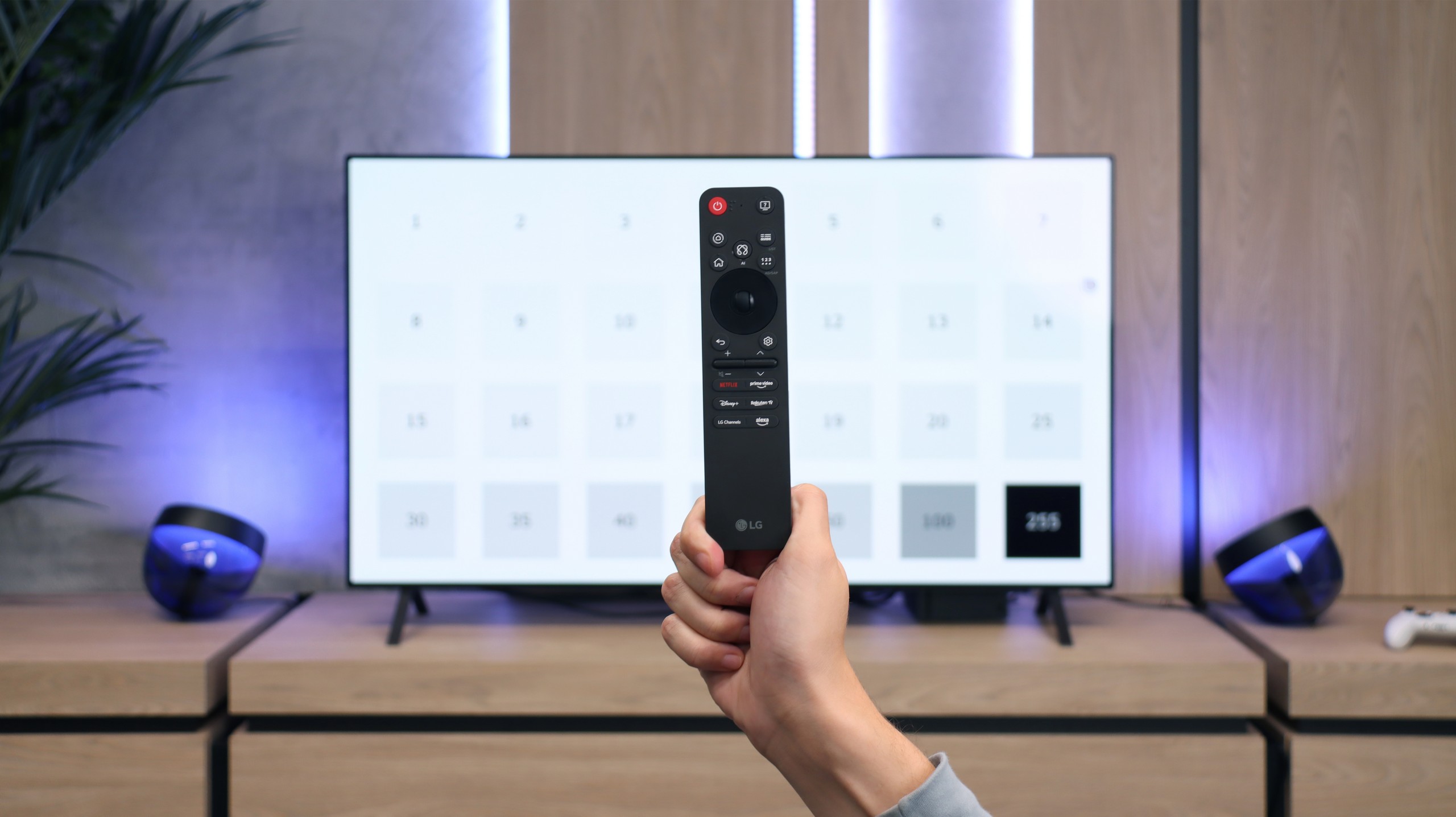
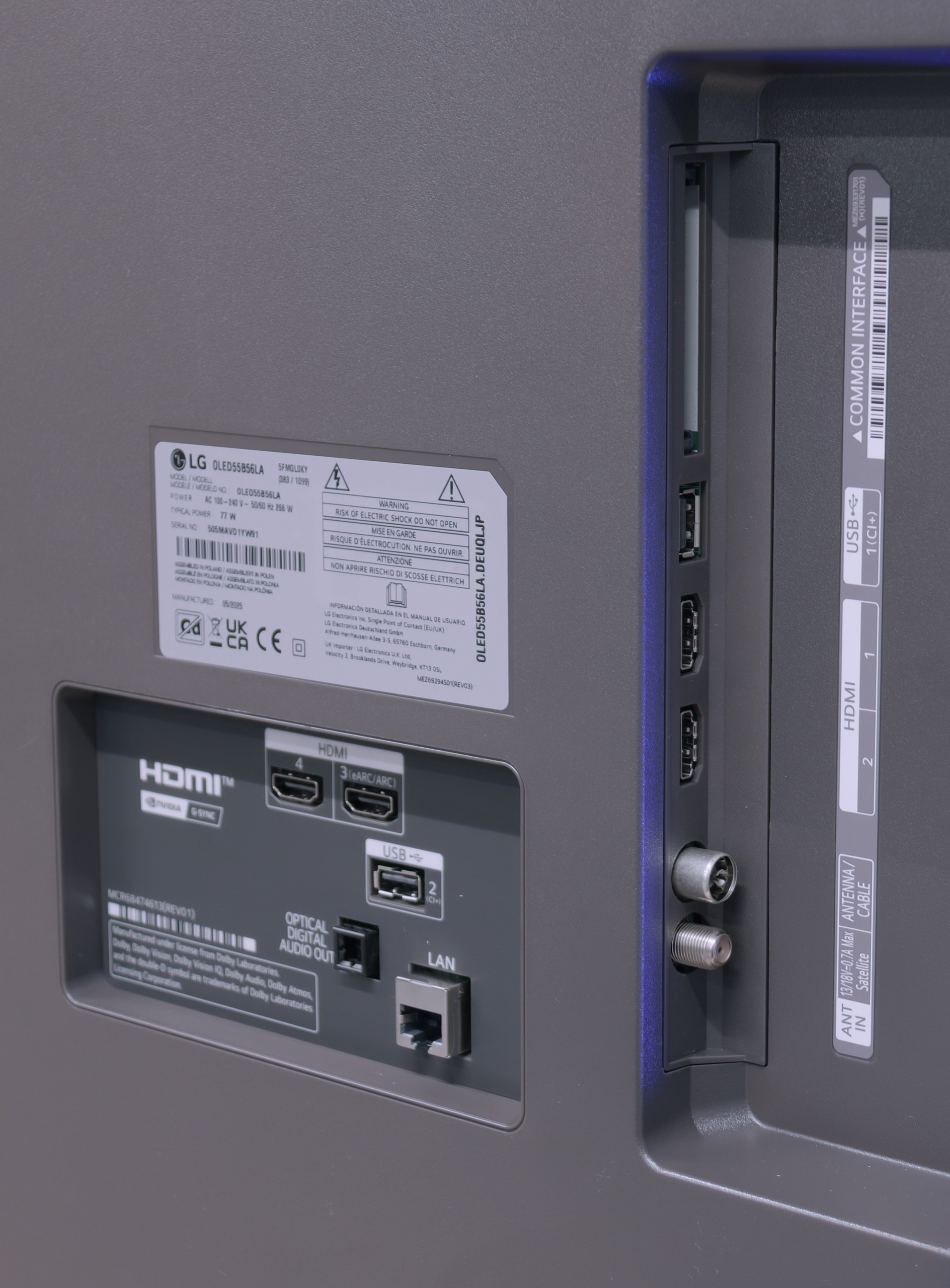
Sony X90L offers a rich set of features, starting with the Google TV system, which is the heart of entertainment. This solution provides access to a huge amount of apps and streaming services, and the interface is intuitive and clear. With voice assistant support, using the TV becomes even more convenient – just one command is enough to find your favorite movies, series, or music. Google TV operates smoothly and allows for full customization, making daily use enjoyable and hassle-free.
The TV also offers a range of practical features. It supports AirPlay and Miracast, making it easy to stream content from mobile devices. Additionally, other devices can be connected via Bluetooth, enhancing versatility and ease of use. For those who prefer traditional television viewing, there is even a recording function available without the need for an external decoder, which is a big advantage for fans of live shows.
In terms of design, Sony X90L may not be the sleekest, but its appearance is impressive thanks to the metal frame, which adds elegance. The TV is equipped with a stand that can be set up in three different ways, allowing it to be adjusted to various spaces and user preferences.
User Features
Although the LG B5 is modern equipment, they haven't forgotten about those who just want to… watch television sometimes. Without apps, without accounts, without logging in anywhere. We have built-in DVB-T2 tuners and the ability to record to USB, with a clear and fast EPG guide. Not enough? There’s even a functioning teletext – a relic for many, perhaps, but everyday life for others. We also appreciate the option to turn off the picture and leave just the sound, which works great for listening to music. And if you want to watch quietly – you can easily pair Bluetooth headphones, without struggling with settings and without delays. Everything works as it should.
SMART TV: webOS
The biggest distinguishing feature of the webOS system – still! – remains the way of control. The Magic remote that comes with the LG B5 (in our version B56 – the one without a numeric keypad) works like a magic wand. We point, click, select. And it just… works. Intuitively, quickly, and without unnecessary left-right arrow clicking. Additionally, there’s an AI voice assistant – quite capable. You can call it directly from the remote and use your voice to search content, change settings, or switch sources. While webOS itself may not be the most "modern" system on the market, and the built-in ads can be annoying, when it comes to user convenience – especially with the Magic remote – it still keeps a step ahead of the competition.
Playing files from USB
8.7/10
8.6/10
Supported photo formats:
Maximum photo resolution:

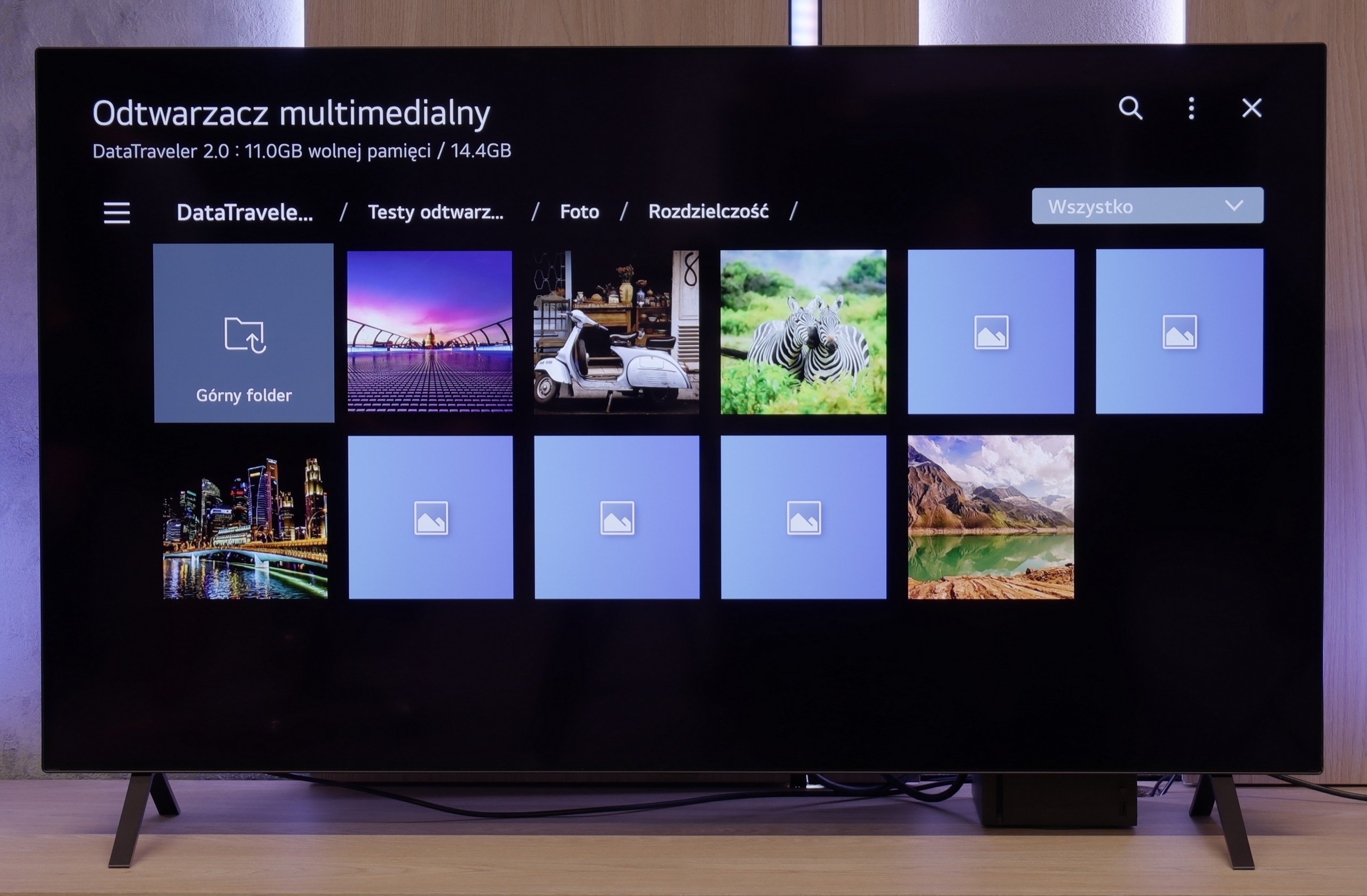
Sony X90L easily handles playback of most popular file formats from USB, which is a big plus for those who frequently access external content. However, it is worth mentioning a slight downside – the built-in player does not allow for changing the font color in subtitles, which can be problematic for some. Fortunately, thanks to the advanced Google TV system, users have a wide range of options. It is easy to install alternative media players that offer more personalization options.
LG B5 handles files from USB as it should. Most popular formats work seamlessly, and subtitles – even with Polish characters – are displayed correctly. You can easily play a movie from a flash drive or do a weekend slideshow of your vacation photos without worrying that something will go wrong. However, there was a surprise with files in HEIC format – that is, photos saved by Apple devices. While LG C5 had no issues with them, the B5 stubbornly refused to cooperate and was unable to display them. A minor glitch that probably won’t affect everyone, but it's worth knowing about.
Apps
9.6/10
8.7/10














































Sound
7/10
7/10
- Subjective sound quality:7/107/10
- Dolby Digital Plus 7.1:
- Dolby True HD 7.1:
- Dolby Atmos in Dolby Digital Plus (JOC):
- Dolby Atmos in Dolby True HD:
- DTS:X in DTS-HD MA:
- DTS-HD Master Audio:
The sound in Sony X90L is pleasant and clear, and the presence of bass makes the sound fuller. The TV performs well in playing music, offering satisfying audio experiences. An additional advantage is the support for Dolby Atmos and DTS technologies, which provide a more spatial and immersive sound. As a result, movies, games, and music gain depth and realism, creating a better experience for the user.
We didn't expect miracles – after all, the LG B5 doesn't have an advanced audio system, and its built-in speakers look... well, like those in most flat-screen TVs. And yet – it sounds quite pleasant. Dialogs are clear, the sound doesn't boom, and during a quieter viewing experience, we didn't immediately feel the need to connect a soundbar. It's just a pity that this year LG decided to cut something that worked in the previous generation. We're talking, of course, about support for DTS formats, which we won't find in the B5. If you have movies encoded in that standard – you'll need to rely on an external player.


